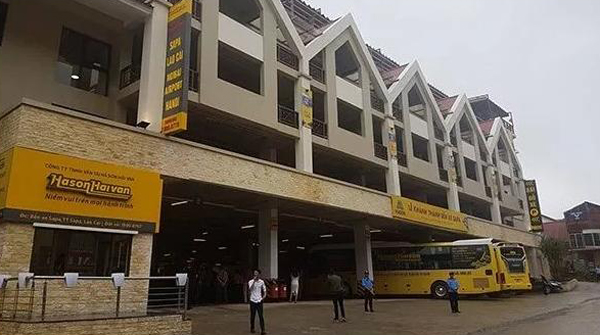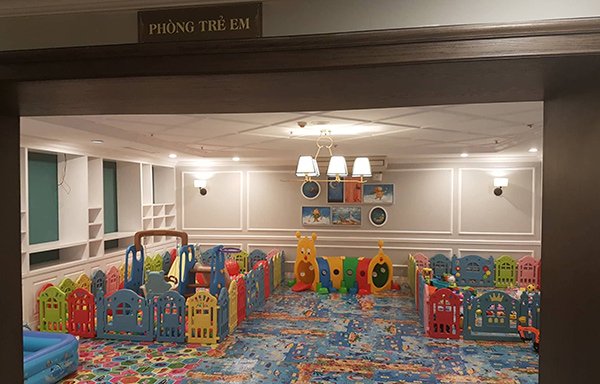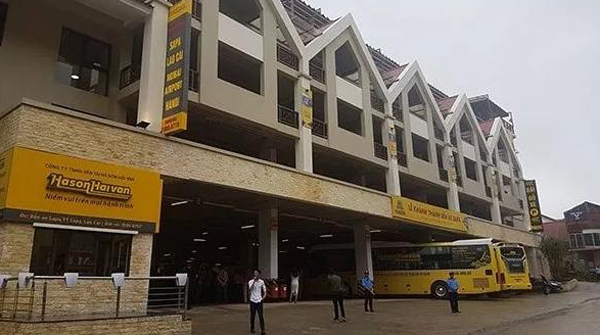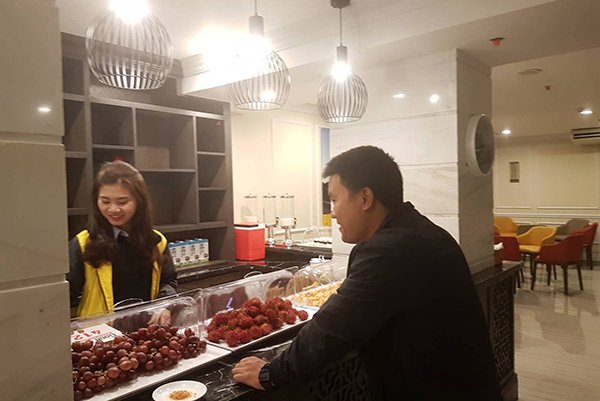
A new multifunctional bus terminal was inaugurated on September 19 in the resort town of Sa Pa, covering over 4,000 square metres with the capacity to accommodate nearly 300 buses.
The new Sa Pa bus station (Photo: Vietnamnet)
The station comprises six storeys and one basement and was built
at a total cost of VND200 billion (US$8.6 million), by Ha Son Tourism Transport
Company.
The Sa Pa bus station is equipped with a smart operation system and the data is
connected with the Vietnam
General Directorate for Roads. Buses travelling in and out of the station are
managed by magnetic cards and monitoring cameras.
It also features modern amenities, such as waiting lounges for VIP passengers,
restaurants and entertainment services for children, which are expected to
offer an excellent experience to visitors to the town.
Vice Chairman, Nguyen Thanh Duong, of Lao Cai province, where the station is
located, said he expects domestic transport companies to open international
routes with the Sa Pa bus station as a key hub.
Each year Sa Pa welcomes around 2.5 million domestic and
foreign tourists.
The waiting lounge for VIP passengers
with free food and drinks. (Photo: Vietnamnet)

A kids’ playroom inside the bus station (Photo:
Vietnamnet)
Source: NDO
Located just a 20-minute drive from Hoa Binh City, Ora Hill Farmstay & Glamping Hoa Binh is a captivating new destination nestled in Mo hamlet, Bình Thanh commune, Cao Phong district. Combining farming with leisure, this tranquil retreat is perfect for those seeking balance, joy, and an immersive experience in the expansive beauty of nature.
Muong Bi - Tan Lac is renowned as one of the four famous Muong regions in Hoa Binh province. Blessed by nature with a favourable climate and stunning landscapes, Tan Lac holds great advantages for tourism development. The local tourism industry has made remarkable strides in recent times thanks to the attention and support from the local authorities and sectors.
With its strategic location, well-developed transport network, and diverse soil and climatic conditions, Hoa Binh is emerging as a must-visit destination in Vietnam's northwestern tourism corridor. The province boasts numerous attractions, including the Kim Boi hot springs (Kim Boi district), the Dau Rong cave complex (Cao Phong), the Mai Chau valley (Mai Chau), and the iconic Hoa Binh hydropower plant.
The northern mountainous province of Hoa Binh has been listed among the 71 most beautiful places to visit worldwide by the prestigious US travel magazine Condé Nast Traveller.
Hoa Binh province’s rich natural and cultural resources position it as a prime location for developing community-based tourism (CBT). In recent years, support from central and provincial policies, as well as assistance from non-governmental organisations, have encouraged local ethnic minority and mountainous communities to actively engage in the sector.





